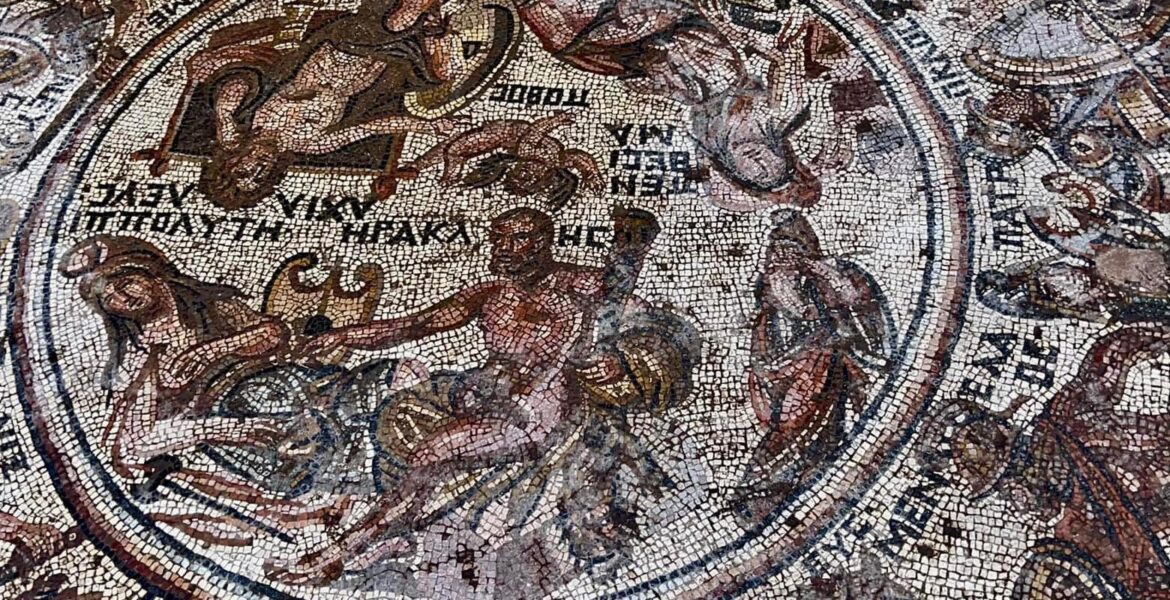Remarkably intact artwork created 1,600 years ago shows colourful images of ancient Greek soldiers and Amazons who fought in the epic battle.
A 1,300-square-foot mosaic discovered in Syria showing scenes from the Trojan War, a mythological struggle that took place more than 2,000 years ago between the ancient Greeks and the people of Troy, is the 'rarest' ever discovered due to its remarkable preservation.
The magnificent Roman-era artwork was created 1,600 years ago. It is decorated with pictures of powerful Amazons who battled alongside the Troyan people and warriors brandishing swords and shields and bearing their names.
The mosaic is the most recent to be discovered in Rastan, in the Homs area of northern Syria, which the government reclaimed from rebels in 2018 after years of carnage. A year earlier, in 2017, armed groups tried to sell fragments of the mosaic and listed them on social media.
A unique depiction of ancient Amazon warriors who battled alongside the people of Troy is one of the scenarios the mosaic displays, according to Dr Humam Saad, associate director of the excavation and archaeological research at the directorate.
The images are "rich in details," feature scenes from the Trojan War between the Greeks and Trojans, and represent a "find that is unique on a global scale," Dr. Saad told The Associated Press.
In Greek mythology, a race of fierce women known as the Amazons lived in the area that is now Ukraine.



Penthesilea, an Amazon queen who fought in the Trojan War, and her sister Hippolyta, who possessed a miraculous girdle, were two of the most well-known Amazon queens.
Hercules was sentenced to 12 labours because he killed his wife and kid, but only after the Roman goddess Hera made him lose his mind.
Along with 40 of his mistresses, the mosaic also features Neptune, the sea god of the Ancient Romans.
When the Trojan prince Paris kidnapped Helen, the wife of Menelaus of Sparta, the division between the ancient Greeks and the inhabitants of Troy erupted about the 12th century BC.
The Trojans resisted Menelaus' demand for her return, so he persuaded his brother Agamemnon to command an army against Troy.
The Greeks attacked Troy for nine years, but the city itself held out because it was well-defended and was led by Hector and other sons of the royal household. Finally, the Greeks created a huge wooden horse that was hollow within and contained a small band of warriors.
Although there has long been disagreement over whether the fight took place, enough evidence has been uncovered to convince many historians that it did - even though the enormous wooden horse has never been located.
While the battle may have occurred, all war-related rumours are now accurate.
This includes the legend of Achilles, a famous ancient Greek warrior who gained his invulnerability after his mother immersed him as an infant in the River Styx.
However, according to Greek legend, his heel was his lone weak point and the only item that did not dip.
After learning that his beloved had been slaughtered by the army of Troy, Achilles in Homer's Iliad tears off his armour in a fit of wrath, he is then struck with an arrow in the heel, instantly dying.
Despite some claims to the contrary, there is no proof that Achilles was modelled after a real soldier.
The mosaic is the most important archaeological discovery in Syria.


